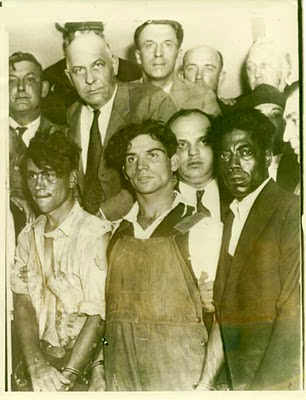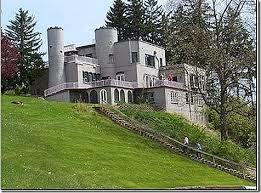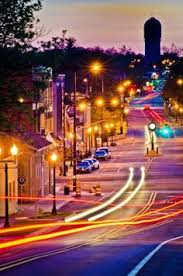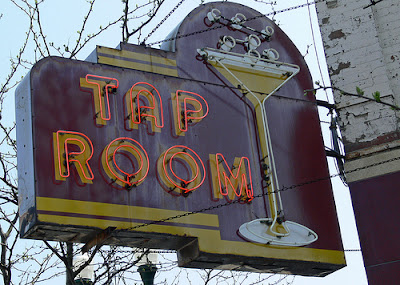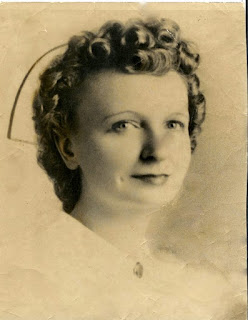 |
| Pauline Campbell was a nurse at St. Joseph's Mercy Hospital in Ann Arbor, Michigan |
Saturday, September 15, 1951, had been a hot day in Ann Arbor, but near midnight it was pleasantly cool. Pauline Campbell (34) had just finished her evening shift working the maternity ward at St. Joseph's Mercy Hospital. She crossed Observatory Street kitty-corner and headed down Washington Heights, a narrow, darker street towards where she lived several houses away.
***
Only four nights before, a man had slugged a nurse with a blunt instrument while walking home from University Hospital in this same neighborhood.
Bill Morey, Max Pell, and Dan Meyers were recent Ypsilanti High School graduates. On Wednesday night, they drove to Milan and bought two six-packs of beer at a tavern known to sell to minors.
Dan Meyers owned the car but didn't have his license yet and allowed Bill Morey to drive his car that night. They were cruising Ann Arbor, according to Dan, because they wanted to steal some hubcaps they could sell or trade for an echo can--a fifteen inch chrome exhaust pipe for his car.
Rather than steal hub caps on a quiet, shadowy street, Bill drove towards the well-lit University Hospital area. The three of them were tipsy, and Bill decided he wanted to pick up some girls. On the way over, Max and Bill began talking about snatching a nurse's purse. Later in court, Dan testified it was mainly Bill's idea.
"Let's hit somebody over the head and rob them," Bill said. There was a 12" crescent wrench among some loose tools they used to steal car parts under the front seat.
"This should do it," he said, striking his open palm to test its heft.
The street was busy, but when they saw a nurse walking up a deserted street alone, Bill said, "I'm going to hit her and drag her into the car."
In court, Dan Meyers claimed he kept telling Bill not to do it, but he did not hold Bill back nor did he shout out a warning to the nurse.
Bill got out of the car swiftly and walked up behind the unsuspecting nurse and swung the wrench. He hit her--but she didn't fall down--she screamed and ran. Bill jumped back to the car, and the three teenagers drove away laughing about the failed attempt.
Shirley Mackley was able to describe her attacker for police: five feet, ten inches tall; about one-hundred and seventy-five pounds; and young--possibly twenty years old. She was not seriously hurt. Her attacker had wanted to stun her and drag her into the car, so he held back a fatal blow. That would not happen again.
***
Four nights later, Bill Morey and Max Pell were out cruising again, but this time with Dave Royal, someone they recently met. Max was driving his beloved car that night.
 They talked Dave into paying for the beer because he worked construction and had money. Max bought a case of beer, and they split it between themselves and two "wild" girls Bill knew from Milan. Dave was the odd man out and drank alone in the car.
They talked Dave into paying for the beer because he worked construction and had money. Max bought a case of beer, and they split it between themselves and two "wild" girls Bill knew from Milan. Dave was the odd man out and drank alone in the car.
They drank most of the beer and dropped the girls off at their homes at about eleven. The inebriated trio headed into Ann Arbor. That's when Bill told Max Pell, "Go up around the hospital."
There was a rubber mallet with a foot long wooden handle in the car that Max's father used to repair household furniture. They spotted a lone nurse leaving Mercy Hospital. She crossed Observatory Street kitty-corner and starting down the hill on Washington Heights Street which was narrower and darker.
Max turned off his headlights and Bill said, "Let me out here behind the nurse."
With Bill on foot, Dave asked Max if Bill intended to assault and rob the nurse. "I know he had it on his mind, but I don't know if he is going to do it."
Wearing moccasins, Bill gained on the nurse, rushed her from behind, and knocked her unconscious. Bill struck her several more times, then he called out to Dave to help him drag her limp body to the car.
They got only as much as her head in the car when Max told them, "Don't put her in the car!" They dropped her body in the street and drove off leaving her unconscious. She died soon after in the hospital where she had just finished her shift.
The young thugs took Huron River Drive back to Ypsilanti, but not before Bill went through the victim's purse. In it was a cigarette lighter, a watch, and a dollar and a half. From a bridge, they threw her purse into the Huron River. Afterward, they bought ninety-four cents worth of gas, ate sandwiches, and drank coffee to sober up at a truck stop called the Fifth Wheel.
***
After the first nurse attack, Bill confessed to his good friend, Dan Baughey, who was on probation at the time, that he was the person who hit the nurse. When Dan heard about the killing of the second nurse, he was urged by his priest and his father to tell the police what he knew.
At 3:00 PM on Wednesday, September 19, Dan Baughey reported to police, and the three suspects were apprehended. On their drive from the Ann Arbor police station to Lansing to take lie-detector tests, Bill chatted with detectives about police cars. That's all he talked about. Dave Royal did not say much for most of the ride.
But Max Pell was worried chiefly about his car which had been taken into evidence. He told the police that he recently put a new engine in it and asked them not to drive it over fifty miles an hour.
The young toughs confessed when they got to Lansing. Max Pell was the first to break down when police told him they were going to cut up his car's upholstery to check for blood evidence.
"You don't need to tear my car apart. I'll tell you. It's blood."
***
The victim, Pauline Campbell, was an orphan born in Ohio and raised by a farm family. She worked her way through college as a housemaid and later as a nurse's aide. She was single, quiet, tidy, and rather slight of build said her landlady.
Less than six weeks after the arrest, the case went to trial. The courtroom as packed with local teenage girls, some who managed to get their pictures in the paper and later got in trouble for skipping school. When the defendants entered or left the courtroom, Bill was always first, then Max, and then Dave.
In his summation, Washtenaw County Prosecutor Reading told the jury that "...on the night Miss Campbell was killed she, unlike the three teens, had been working and working at a task that benefits other people." He asked the jury to bring forth a first degree murder conviction for all three defendants.
 |
| Bill Morey's aunt, mother, and father at arraignment. |
Bill Morey and Max Pell were found guilty of murder one and given life sentences. Dave Royal was convicted of second degree murder and got twenty-two years to life for his part. Dan Meyers was sentenced to serve one to ten years for his complicity in the attack upon the first nurse who survived.
***
After the trial, the community of Ypsilanti felt that the finger of shame was being pointed at them for letting their kids run wild and get out of control. This was true from the Ann Arbor News perspective and the Detroit newspapers also.
The city of Ypsilanti went into a defensive mode. One former Ypsilanti policewoman, Mrs. Dellinger, was quoted as saying, "The community has committed itself to a hush-hush policy. My feeling is that there will be another episode just as horrifying before this community can be awakened."
Sixteen years later, the first of the Washtenaw County Murders struck the Ypsilanti community. This time a serial killer was on the loose, and the rubber mallet murder had long been forgotten.

